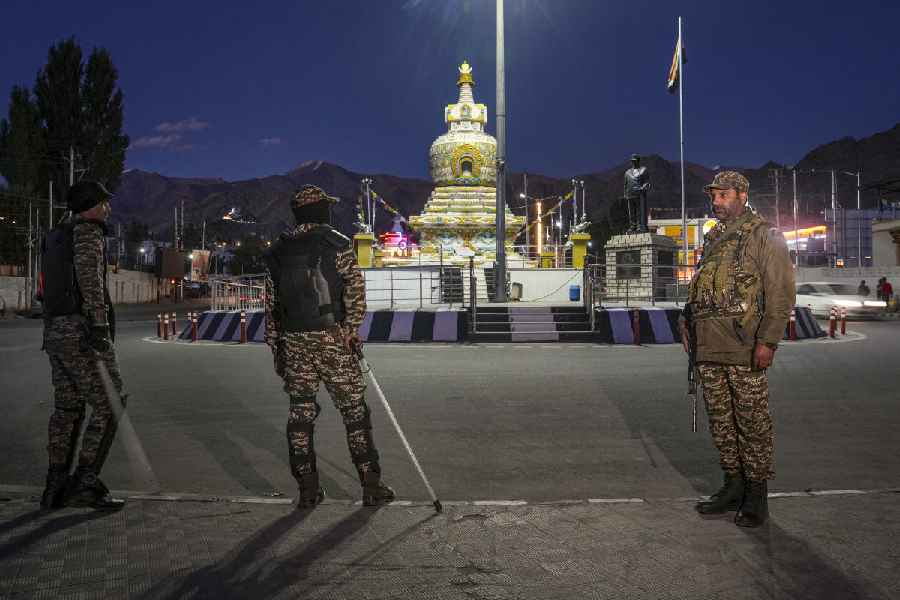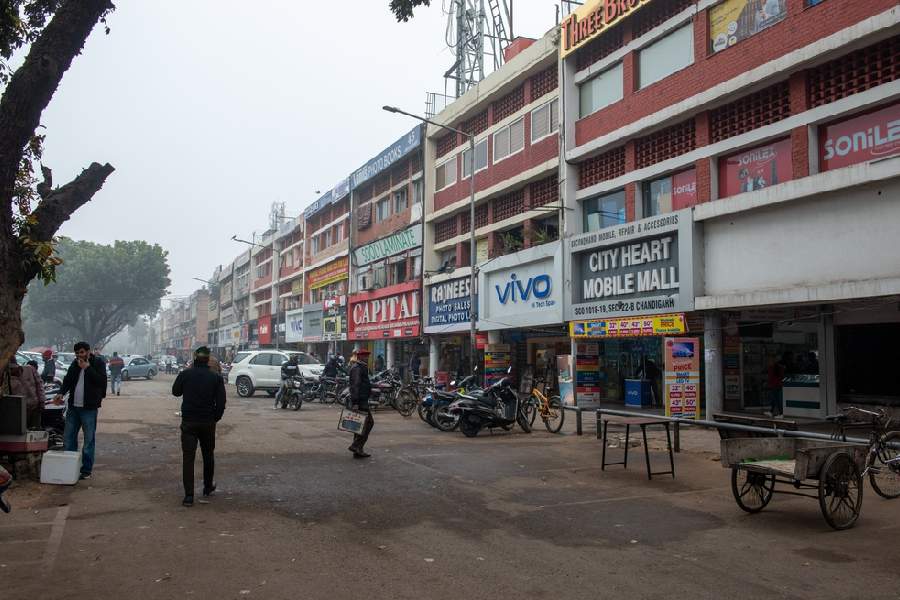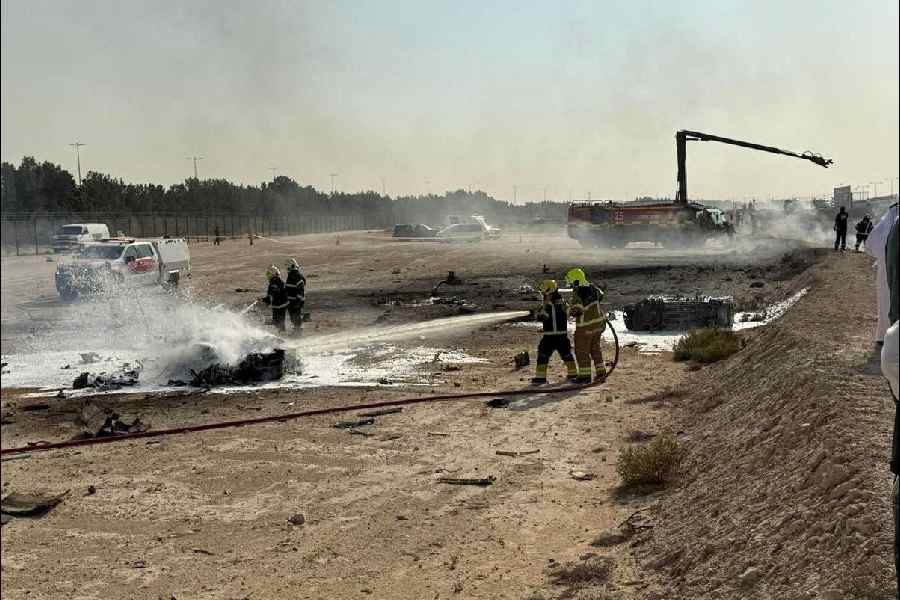There is always more to Ladakh than meets the eye or the camera. The tourist’s lens, the bureaucrat’s memo, even the strategist’s map flatten a region that resists simplification. The current discourse, whether triumphalist or alarmist, after the recent protests and killings, fails to capture the paradoxes and quiet resilience that define this high-altitude civilisation. To understand Ladakh is to grasp its contradictions: once the crossroads of Inner Asia, now cast as a periphery; a people at once fierce and contemplative; a society tiny in number but vast in diversity; an economy torn between pashmina and power; and a polity emancipated from one centre only to find itself captive to another. This is an attempt to deconstruct Ladakh; not as a postcard paradise or a geopolitical pawn, but as one of the most fascinating mirrors of the region’s encounter with modernity.
Few recall that Ladakh was once a centre, not a margin. For centuries, caravans from Yarkand, Tibet, Kashmir and Baltistan converged on Leh, where salt, silk, turquoise and pashmina changed hands. Ladakh was a bridge of civilisations where Persia met Tibet, Islam met Buddhism, and the Himalayas connected rather than divided. The Dogra conquest of 1834 and British cartography turned that fluid crossroads into a fixed frontier. The Great Game made Ladakh a buffer among empires; Independence made it a borderland among nations. Highways now link Leh to Srinagar and Manali, but they also mark its disconnection from the trans-Himalayan world it once animated. Remoteness, then, is not geographic but political: the outcome of being defined by others’ maps and fears. The tragedy is that a land which once linked civilisations is now treated as an outpost to be administered, secured and photographed.
Ladakh is India’s paradox of faith and sacrifice, a land of monks and martyrs, of those who meditate and those who guard the passes. From 1947 to Kargil and Galwan, Ladakhis have shed blood for the Republic even as their monasteries radiate peace. Helena Norberg-Hodge once called Ladakh an “ancient future”, a society whose wisdom lay in restraint. Yet restraint here coexists with resolve. A monk at the Hemis Gompa once told me, “We can chant for peace and still defend the mountains.” That duality of compassion and courage defines Ladakh’s spirit. Its calm is not passivity but discipline; its non-violence, moral strength. Beneath composure lie pride and pain.
To outsiders, Ladakh appears uniform: mountains, monasteries, monks. The reality is far richer. Within barely three lakh people live multiple ethnicities and faiths: Baltis, Bods, Arghons, Shias, Sunnis, Buddhists and the nomadic Changpas. Dialects shift from valley to valley; even Buddhism divides into Gelugpa and Drukpa traditions. This pluralism was long Ladakh’s strength. Leh’s Buddhists and Kargil’s Shias coexisted through shared hardship — of altitude, cold and isolation. Modern politics, obsessed with binaries, has flattened this diversity into caricature: Leh versus Kargil, Buddhist versus Muslim, loyalist versus dissenter. Yet Ladakh’s unity lies not in sameness but in endurance.
Before the bureaucrat and the ballot box, Ladakh had its own participatory governance. Each village elected a goba or headman to oversee irrigation, land and labour. Disputes were settled through a traditional system, where elders mediated and reconciliation mattered more than punishment. Monasteries and mosques served as civic centres, moral anchors as much as spiritual ones. This mosaic of local institutions ensured that order flowed upward from consensus rather than downward from decree. Survival in the cold desert demanded cooperation, the essence of democracy before its name. Bureaucratic modernity, instead of building on these indigenous systems, displaced them with distant hierarchies and impersonal files.
For centuries, Ladakh’s wealth was spun from the undercoat of the Changthangi goat. Its pashmina sustained livelihoods and linked the region to Kashmir’s shawl-makers and to global markets. The softest fibre in the world emerged from the harshest landscape. Today, a new promise beckons in solar and wind energy. Ladakh is being reimagined as India’s renewable-energy hub. Once it exported warmth; now it will export electricity. Yet if this shift replicates old patterns of displacement, extraction, profit without participation, it will repeat history’s injustices. The true wealth of Ladakh lies not in watts or wool but in its wisdom, the art of living lightly on the land.
When Article 370 was abrogated in 2019 and Ladakh became a Union territory, Leh erupted in joy. After decades of neglect under Srinagar, emancipation seemed at hand. But euphoria soon gave way to disquiet. Unlike Jammu and Kashmir, Ladakh was granted no legislature. Four MLAs disappeared and authority shifted to a lieutenant-governor and distant bureaucrats. In place of autonomy came administration. Ladakhis today find themselves neither under Srinagar nor empowered in Leh but governed by circular. Bureaucratic rule has united Leh’s Buddhists and Kargil’s Shias in a rare solidarity. Their joint demand for Sixth Schedule protections for land, jobs and culture is not rebellion but reason. Delhi must listen before silence hardens into alienation.
Ladakh is Buddhist yet martial, remote yet central, austere yet plural. It stands at the intersection of empires and at the frontline of climate change. Easy narratives — paradise, frontier, trophy — fail to capture its depth. What endures is a civilisation negotiating with modernity while preserving balance and humility.
In the 1930s, Pandit Sridhar Kaul, known as Dulo Kaul, was appointed as education officer in Leh and he did, more than most, in spreading education in Ladakh. He came from Kashmir not as conqueror or contractor but as teacher, carrying books instead of guns. That gesture symbolised an era when engagement meant enlightenment, not control. Today, New Delhi must recover that spirit. Ladakh’s future will not be secured by tourist slogans or megawatt dreams but by partnership, by recognising its people as custodians, not clients.
To understand Ladakh is to see that its contradictions are its strength: blood and Buddhism, pashmina and power, centre and periphery. It does not need pity or patronage; it needs respect, the respect due to a civilisation that still teaches the world how to live in peace on the edge of the sky.
Amitabh Mattoo is Dean and Professor, School of International Studies, JNU










